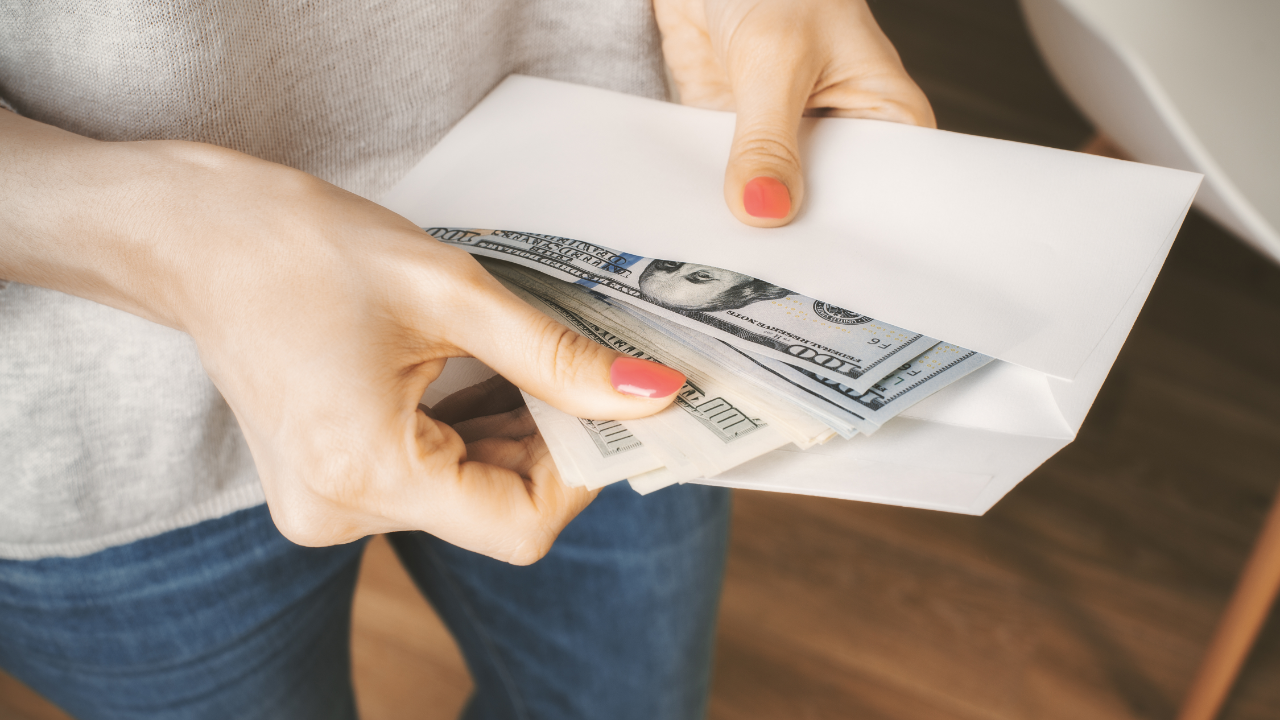Cash stuffing: How this trendy budgeting method works

The Bankrate promise
At Bankrate we strive to help you make smarter financial decisions. While we adhere to strict , this post may contain references to products from our partners. Here's an explanation for .
Although cash stuffing is a technique that’s been around for a while, it’s resurged in recent months — particularly among younger consumers who spend more time online.
Cash stuffing is essentially a budgeting method that prioritizes cash over credit cards to pay for things. It went viral on TikTok, with some videos that highlight the successes of this method garnering millions of views. Amid the pressures of inflation, it has helped many consumers more effectively keep track of their spending and cut excess costs.
Here’s a breakdown of the cash stuffing method and whether it might be a helpful technique for you.
How does cash stuffing work?
The basic premise of cash stuffing is that you set aside cash for different budgeting categories at the beginning of each month. The goal is to spend no more than that cash you’ve set aside for each category.
Stuffing cash away in envelopes (also called envelope budgeting) or aesthetically pleasing organizers gives consumers a tangible view of their finances. With credit and debit card spending, it’s often easy to lose track of how much you’ve spent, accumulate debt and derail your budget. Cash, on the other hand, comes with built-in guardrails — once it runs out, you can’t spend any more.
If you want to try out cash stuffing, follow these steps:
Step 1: Make a budget
Allocate your income into designated spending categories, accounting for wants, needs, debt repayment and savings. A common practice for this is the 50/30/20 budget rule, which is devoting 50 percent of your income to needs, 30 percent to wants and 20 percent to savings. This step will help you determine how much money to devote from every paycheck into each envelope.
You can create categories for tracking all areas of your spending, or you can choose to apply cash stuffing only to certain aspects of your monthly budget, such as saving for a goal or paying down credit card debt.
Step 2: Label the envelopes
Once you’ve made your categorized budget, it’s time to label your envelopes, folders or pouches for each of your categories. For instance, you might label separate envelopes for such items as groceries, mortgage or rent, utilities, transportation, insurance, credit card bills, restaurants and birthday gifts.
Step 3: Stuff the envelopes
When you receive your paycheck, insert your allocated amount of cash into each of your envelopes.
Step 4: Only spend what’s in the envelopes
For each category, limit your monthly spending to your allocated amount in the corresponding envelope. As you spend money throughout the month, you’ll see the cash in the envelopes diminish — what’s important here is making sure the envelope doesn’t become empty too soon before the month ends.
Step 5: Repeat
Repeat this process every month, and adjust your budget as necessary. If there’s any money left over at the end of the month, you can choose to keep it in its envelope for the future, or you can add that money to savings. If you’re coming up short in any category, consider ways to spend less in that category — or you might choose to allocate more money to that category going forward.
Pros and cons of cash stuffing
Pros:
- Increased awareness of spending: Cash stuffing can give you a tangible view of your finances and spending habits. In turn, you’ll have a better understanding of where you spend too much or where you can commit more of your income.
- Preventing debt accumulation: Focusing on using cash for payments instead of credit cards means you’re less likely to rack up credit card debt.
- Easing financial stress: Planning your spending ahead of each month isn’t only helpful for making ends meet, it can also give you a greater sense of financial security and help relieve stress over being able to pay for things.
Cons:
- Lack of protection: Carrying cash around all the time comes with a greater level of risk than keeping your money in a federally insured bank account. If your cash gets lost or stolen, there might not be any way to recover it. Check with your homeowners’ or renters’ insurance to see how much you’re covered for.
- It’s time-consuming: You have to dedicate time at the beginning of each month to planning out your spending, creating an organizer and going to the bank to take out cash.
- It might be tempting to overspend cash: It requires a certain amount of commitment to keep a set amount of cash in different pouches and not take it all out at once or move cash from one pouch to another.
- You could be missing out on potential interest earnings: There’s an opportunity cost that comes with keeping your money in cash instead of putting it into a bank account that earns interest, such as a money market or savings account. In a high-inflation environment, earning interest can help you keep up with rising prices.
- You could be missing out on building credit or earning rewards. Using a credit card instead of cash can enable you to earn credit card rewards. (These rewards can add up quickly, as long as you pay off your credit card balance in full each month.) Unlike using cash, using a credit card responsibly helps increase your credit score over time.
Who is the cash stuffing method best for?
For some, outlining a budget on a spreadsheet might not be enough to keep to a spending plan. It’s easy to put that spreadsheet in a drawer or close the tab on your computer. But when your money is physically distributed according to a planned budget, you’ll always remain aware of the spending limits you set for yourself.
With that said, there’s no guarantee that cash stuffing will stop you from overspending. You still have to commit to leaving the distributed cash in its respective envelopes and taking out only a bit at a time.
Cash stuffing might also be useful for those who want to reduce their credit card spending. By having some or all of your spending money in cash, you’re less likely to make credit card purchases, delay paying them off and add to your credit card bill.
Still, it might not be a good idea to have all of your money in cash instead of in a bank account. A bank account provides greater security and the potential to earn interest on your balance. But cash stuffing is flexible — you can always establish a blended method of allocating some cash for specific goals, while also putting a certain amount into a high-yield savings account.
Bottom line
Cash stuffing, like other budgeting methods, is a way to plan out your spending and keep track of expenses. While it can be helpful for curbing overspending and limiting credit card debt, the downside of budgeting with cash is that you’re missing out on the protection and yields offered by bank accounts.
Cash stuffing doesn’t need to be exclusive, though. You can use it for some spending areas while also keeping some of your money in a bank account. There are also plenty of budgeting apps and tools that can help more digitally minded consumers manage their spending.
Related Articles



